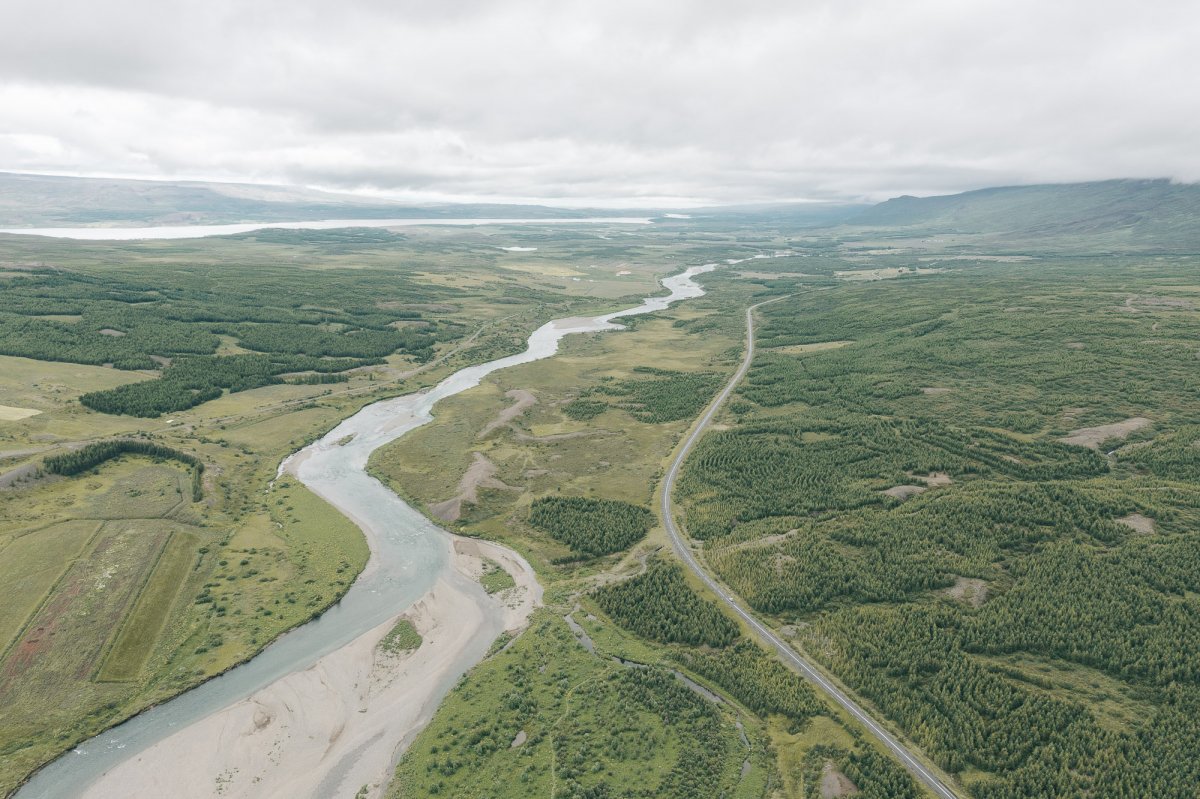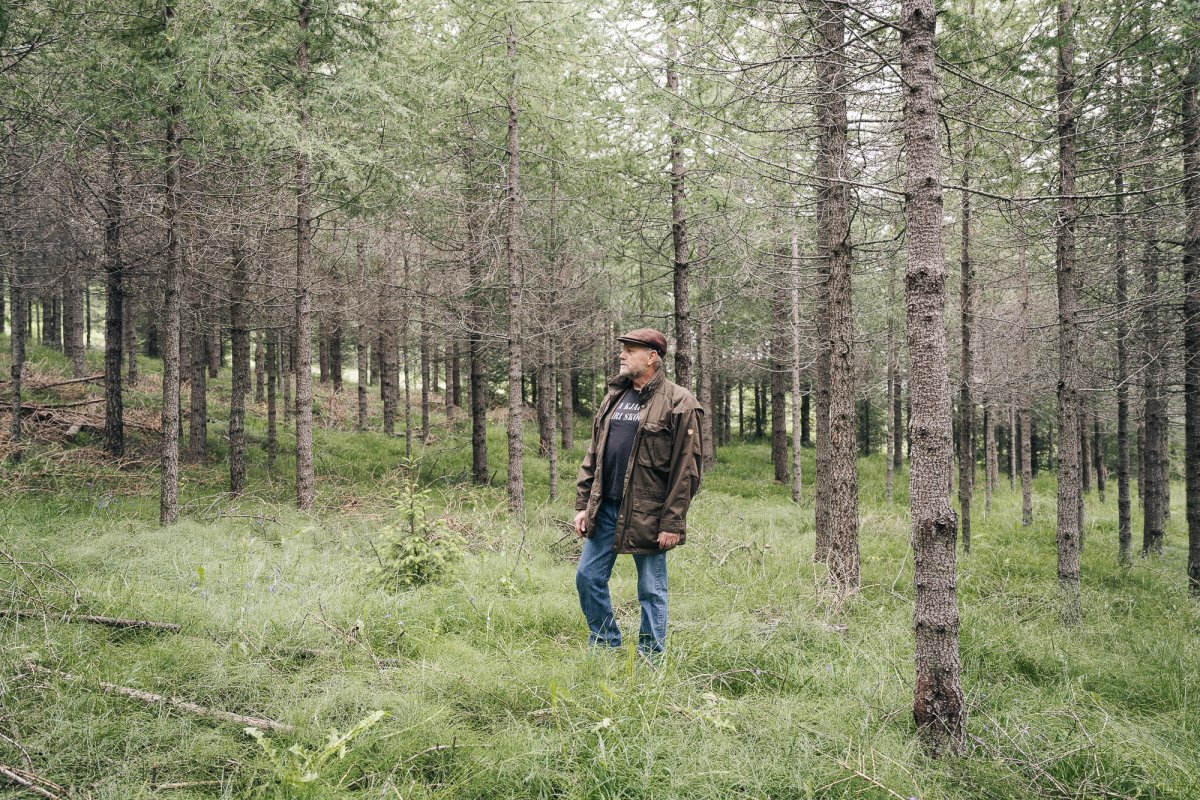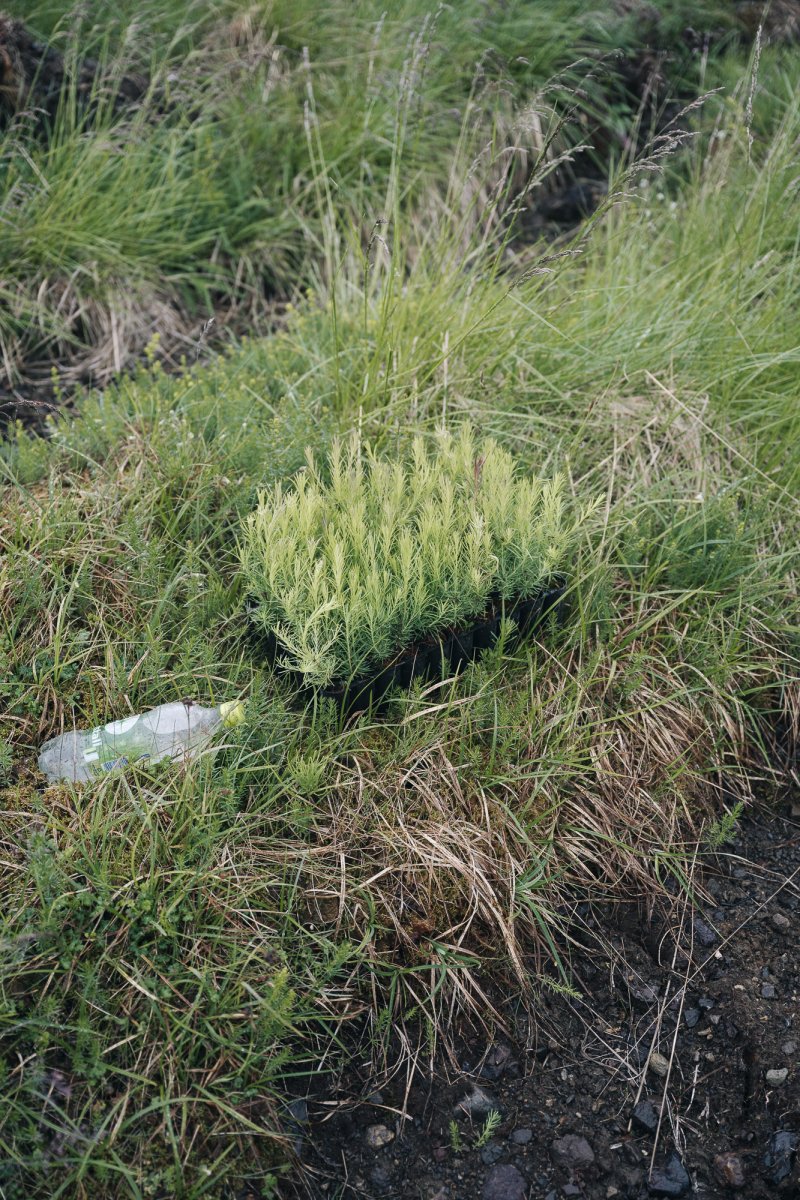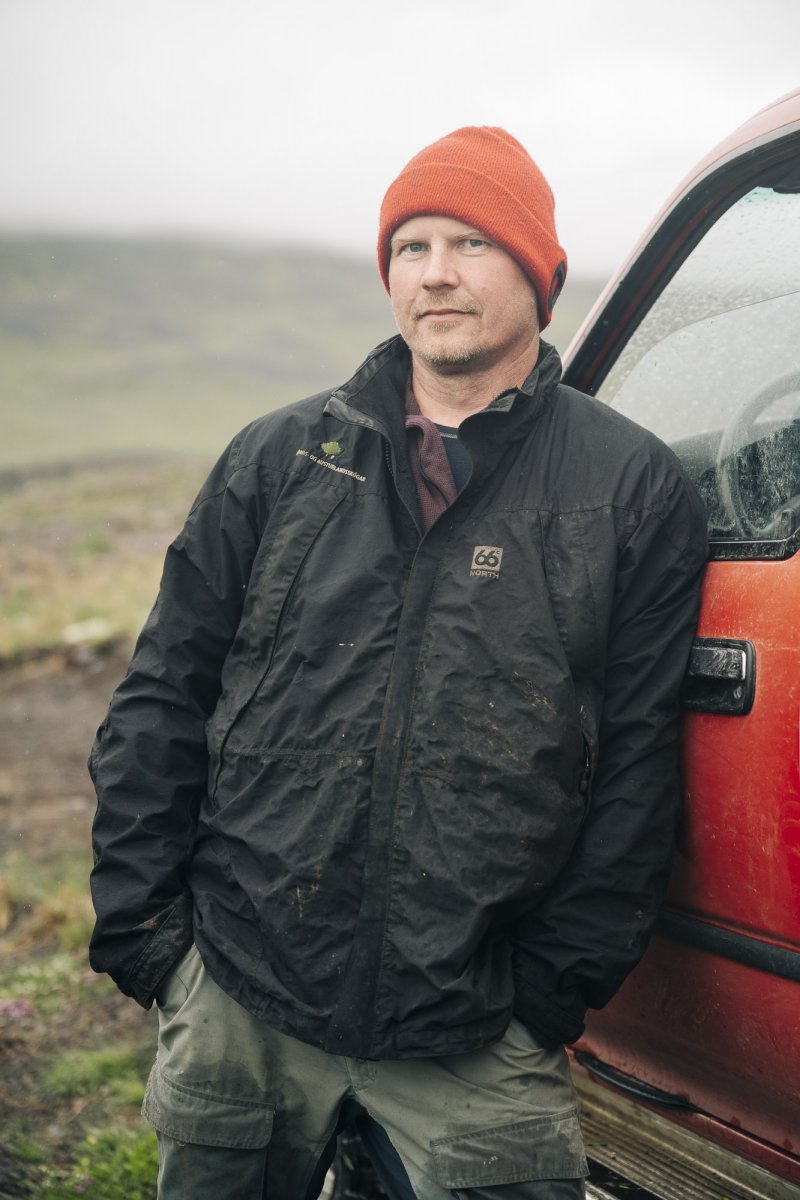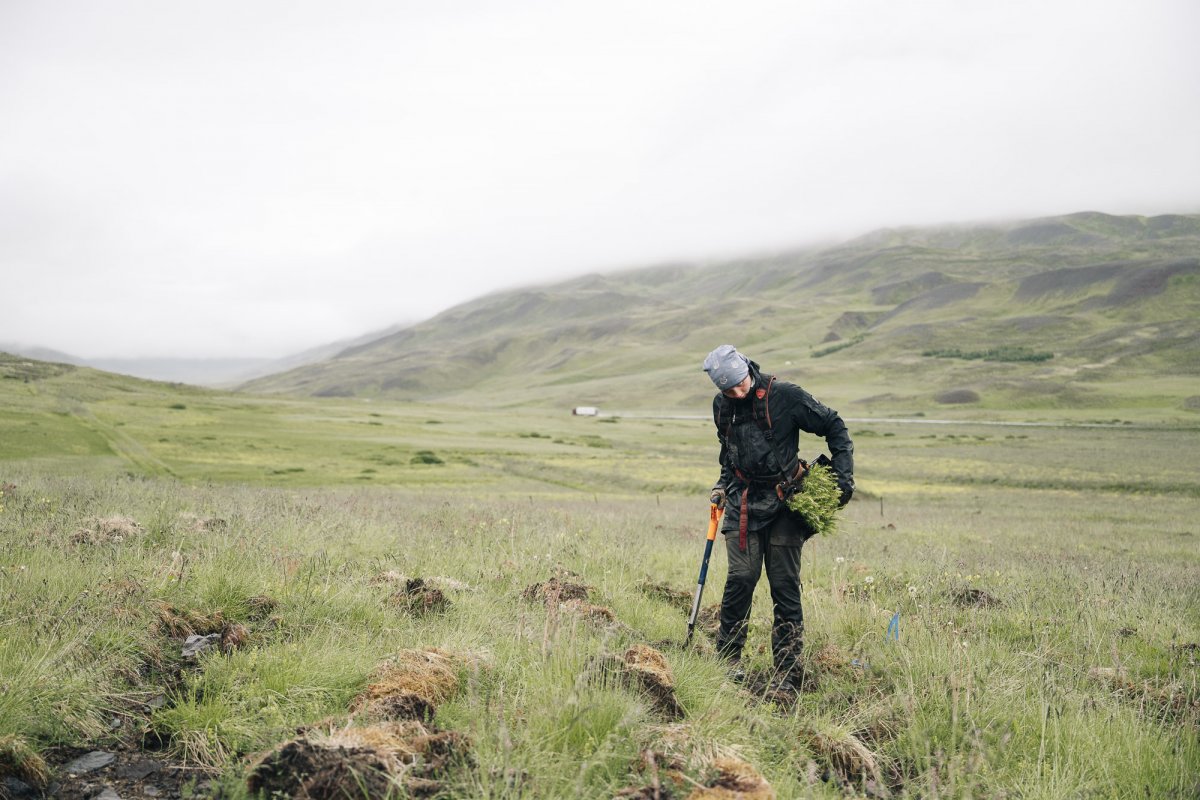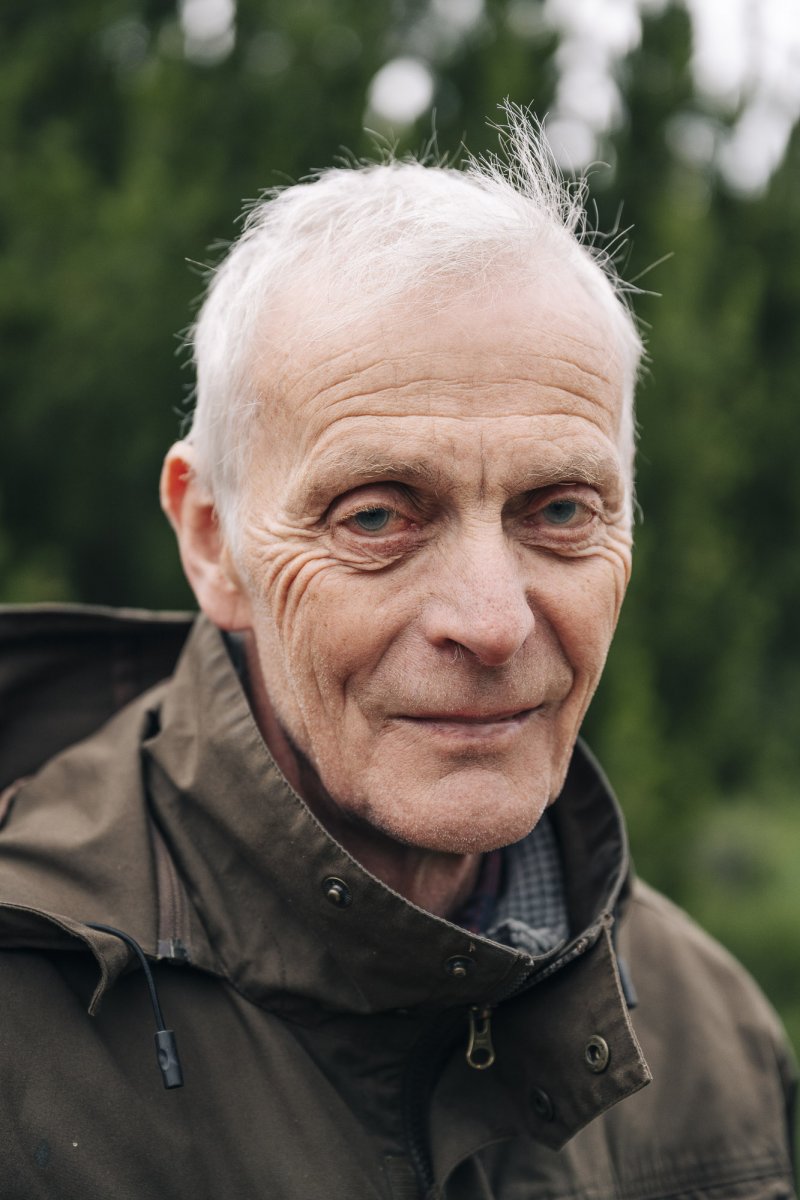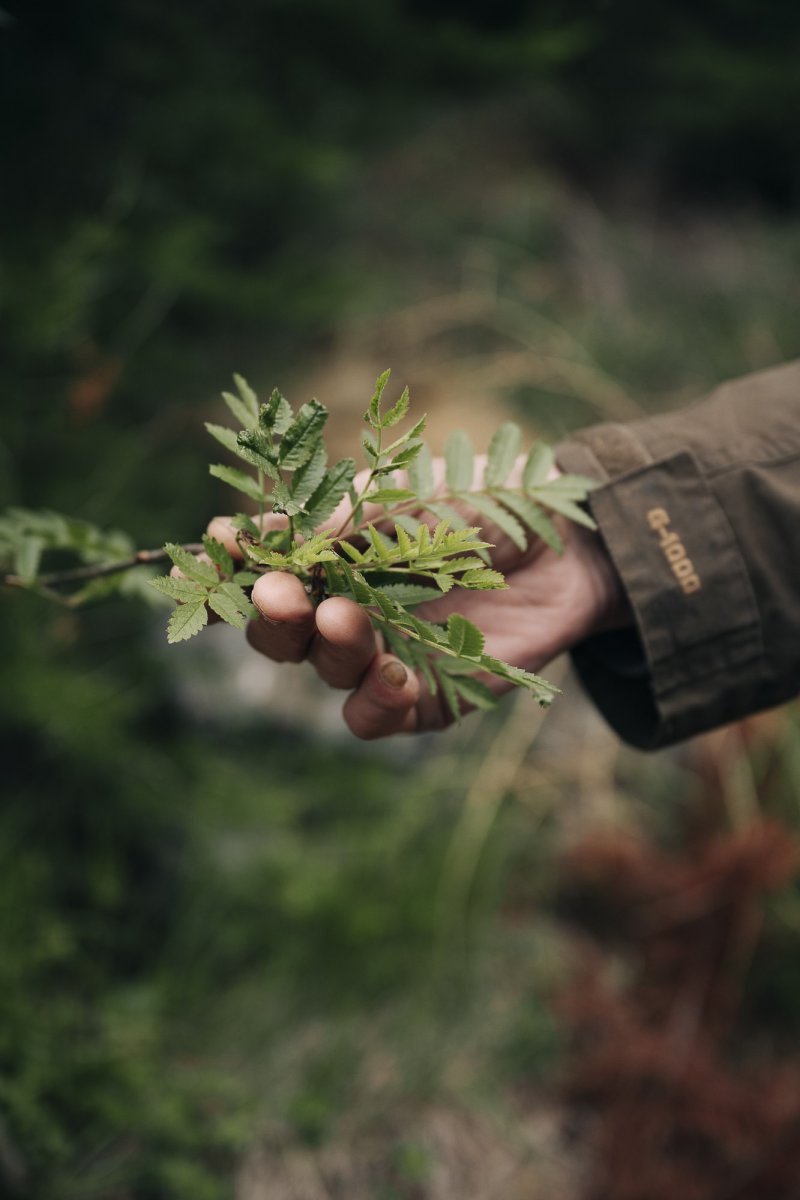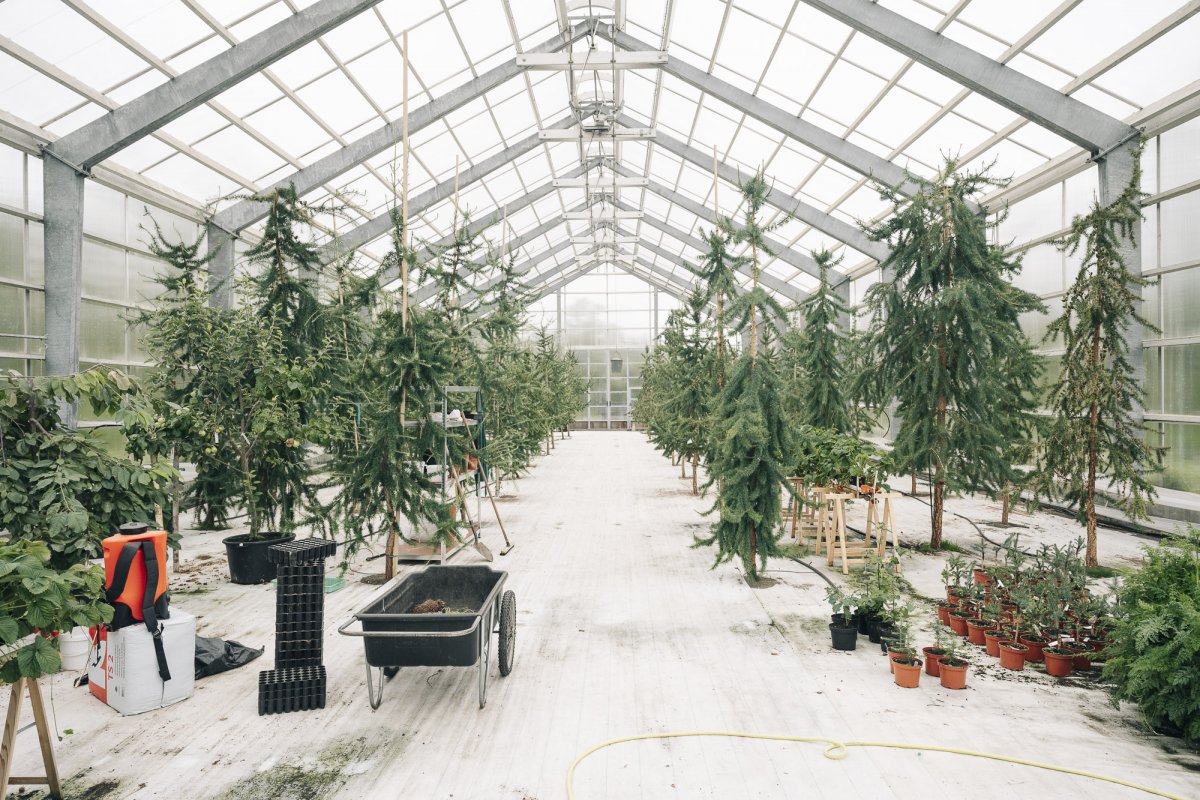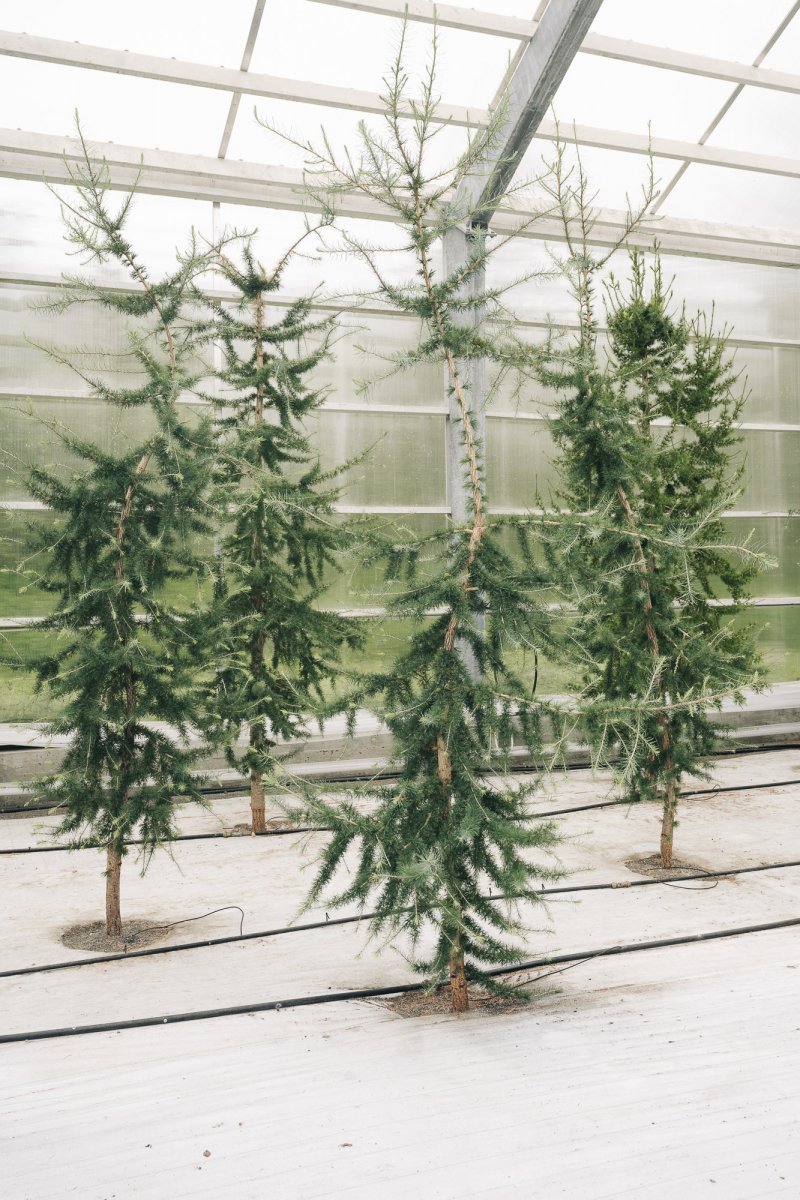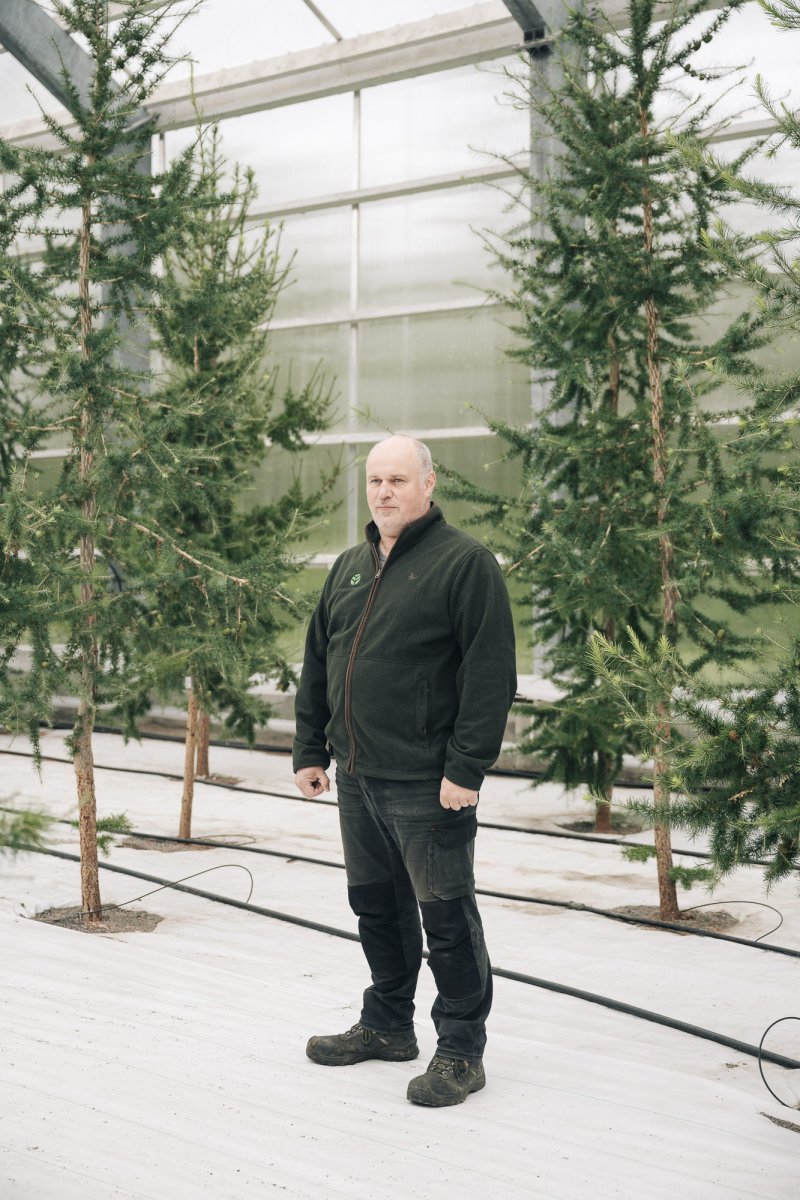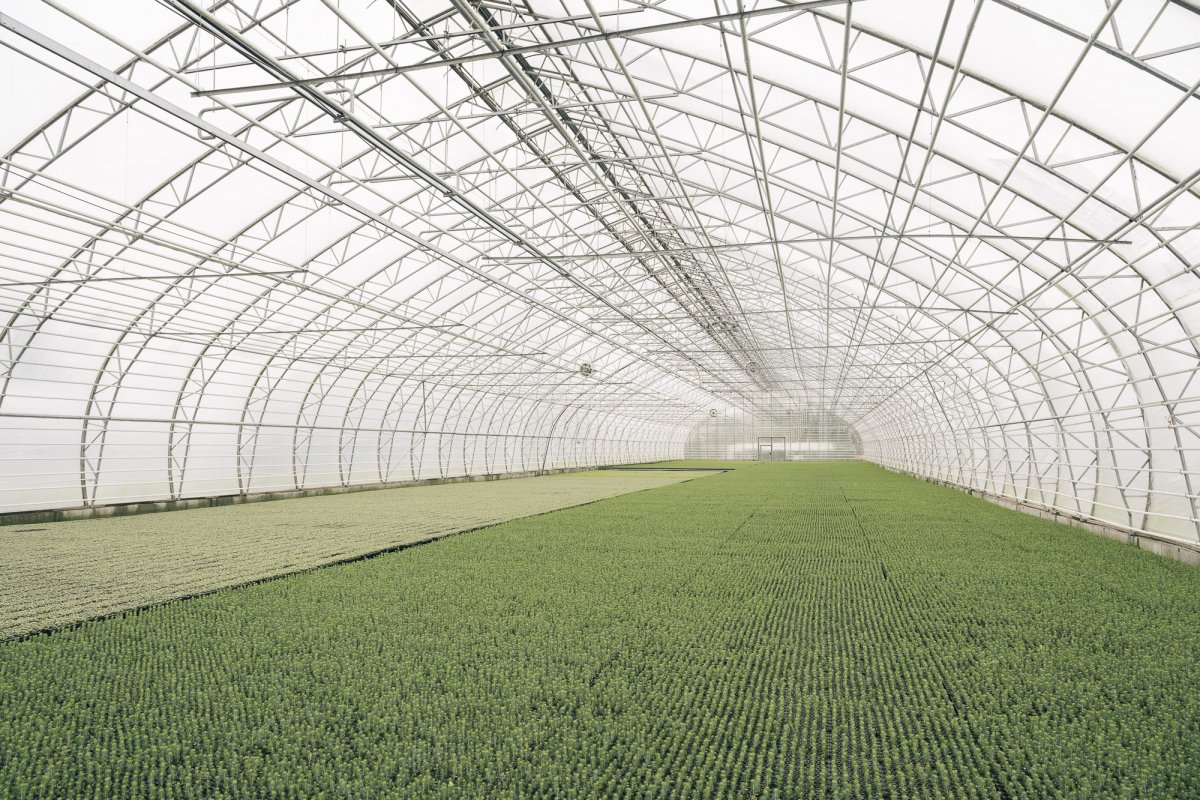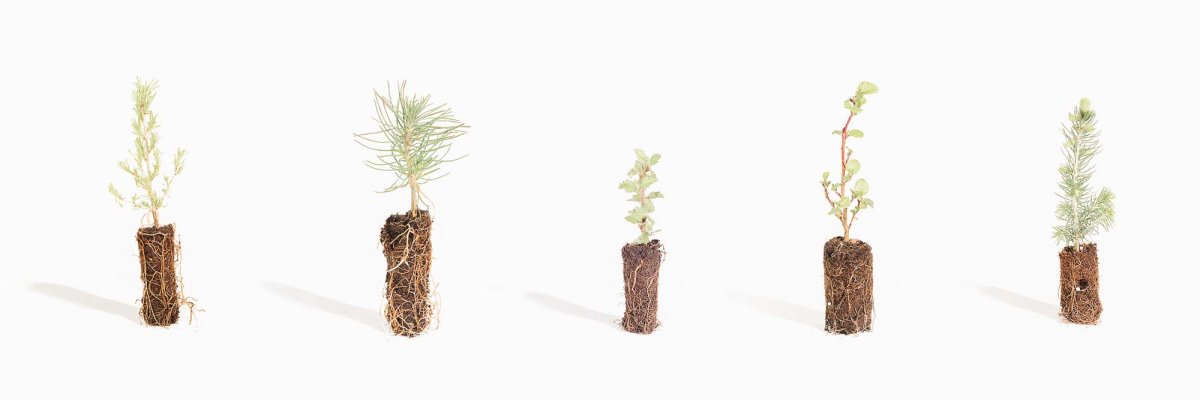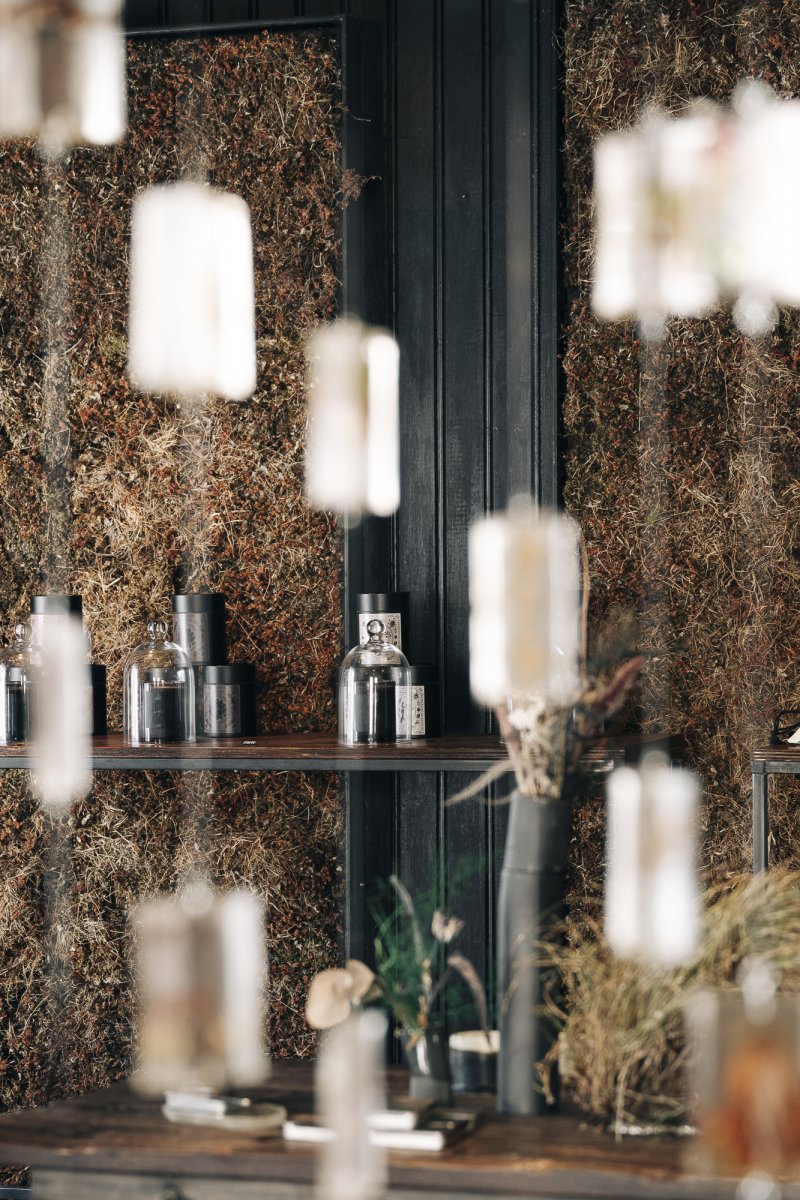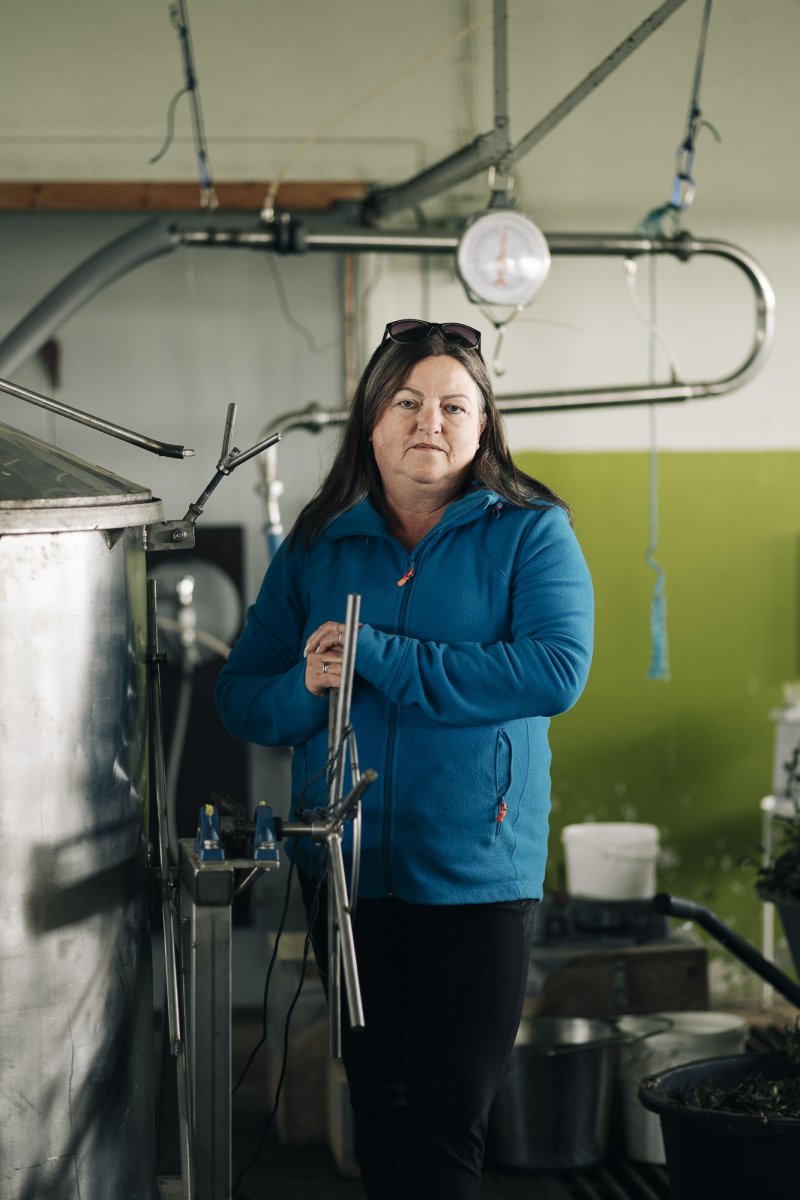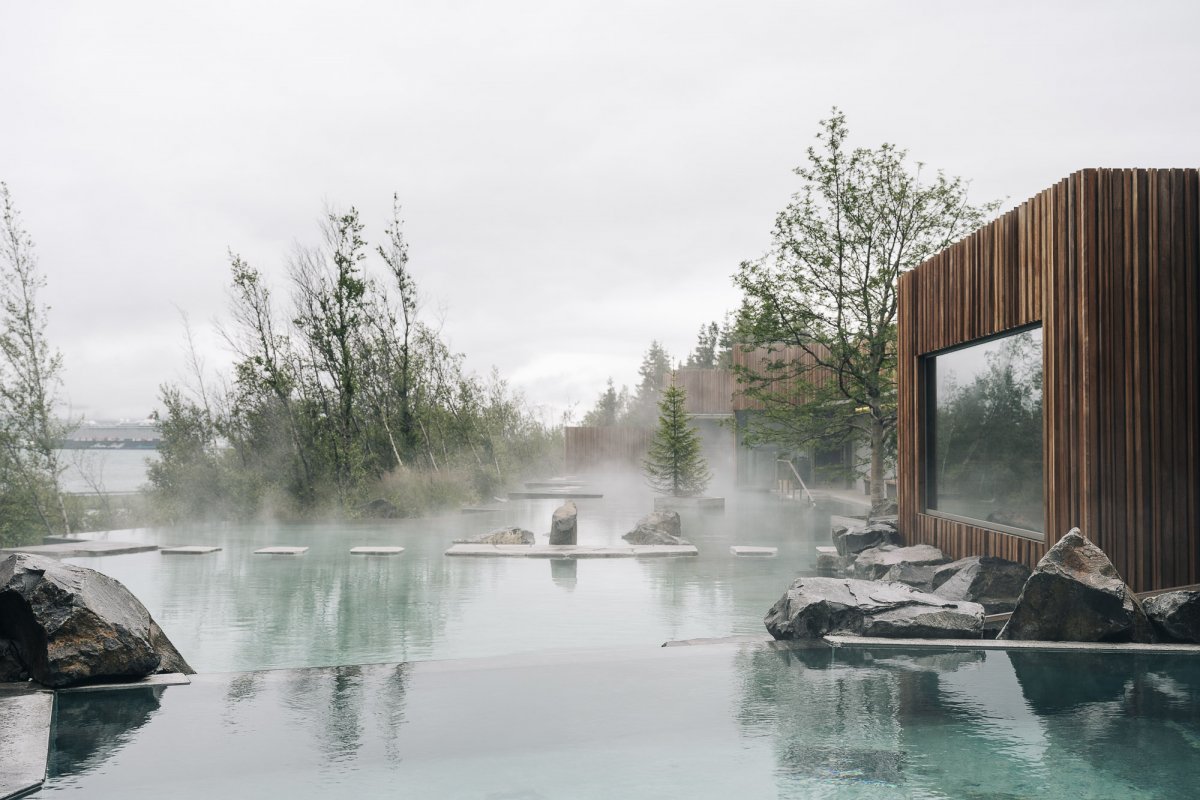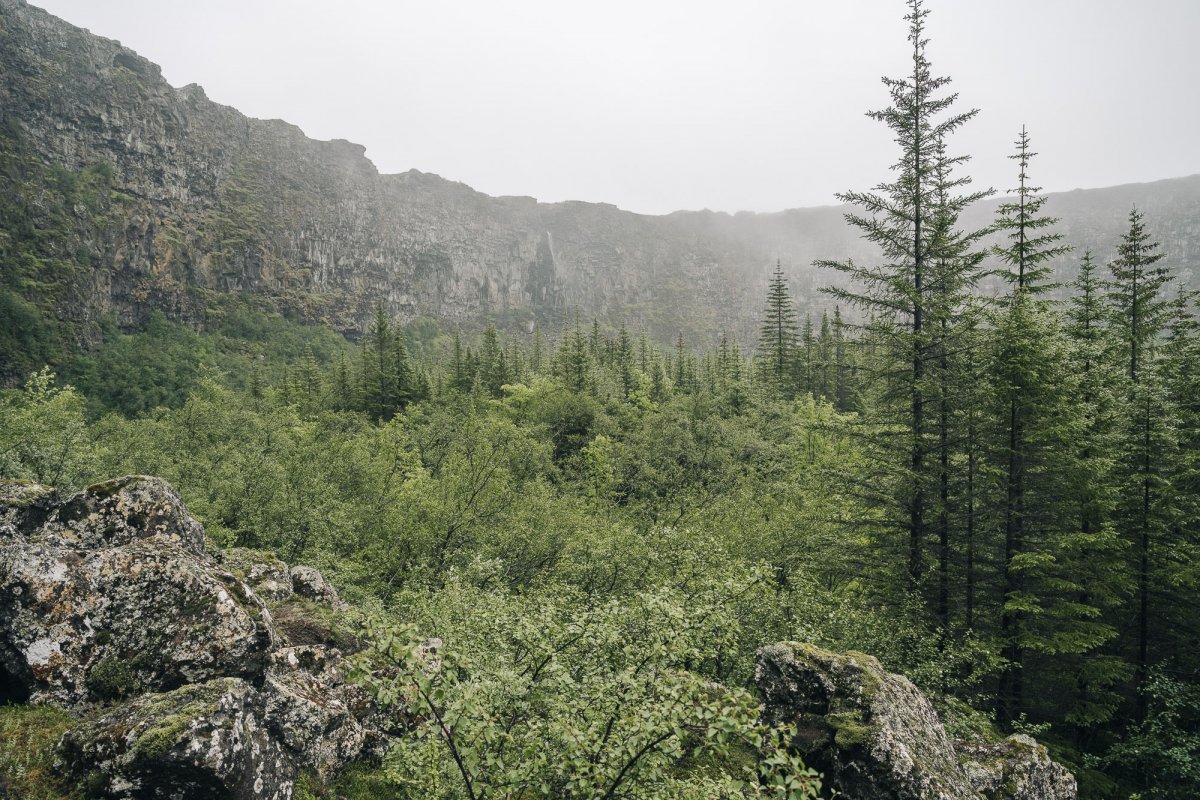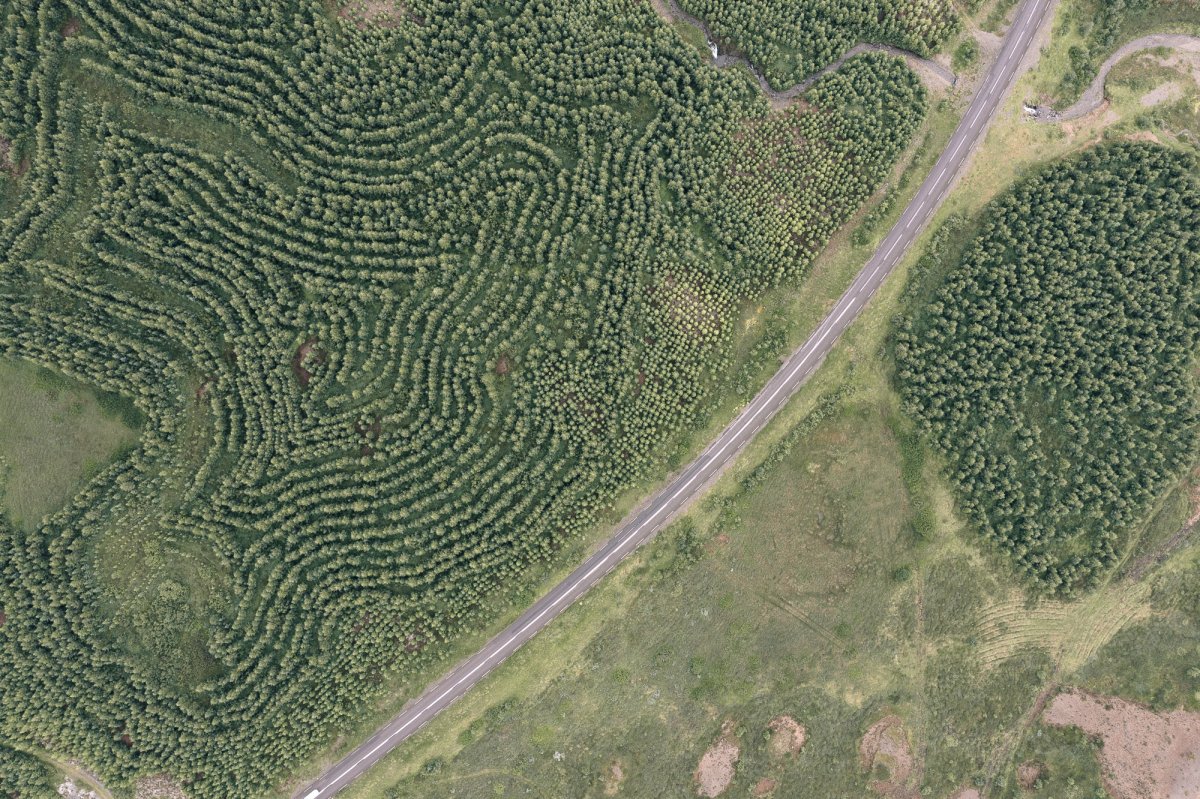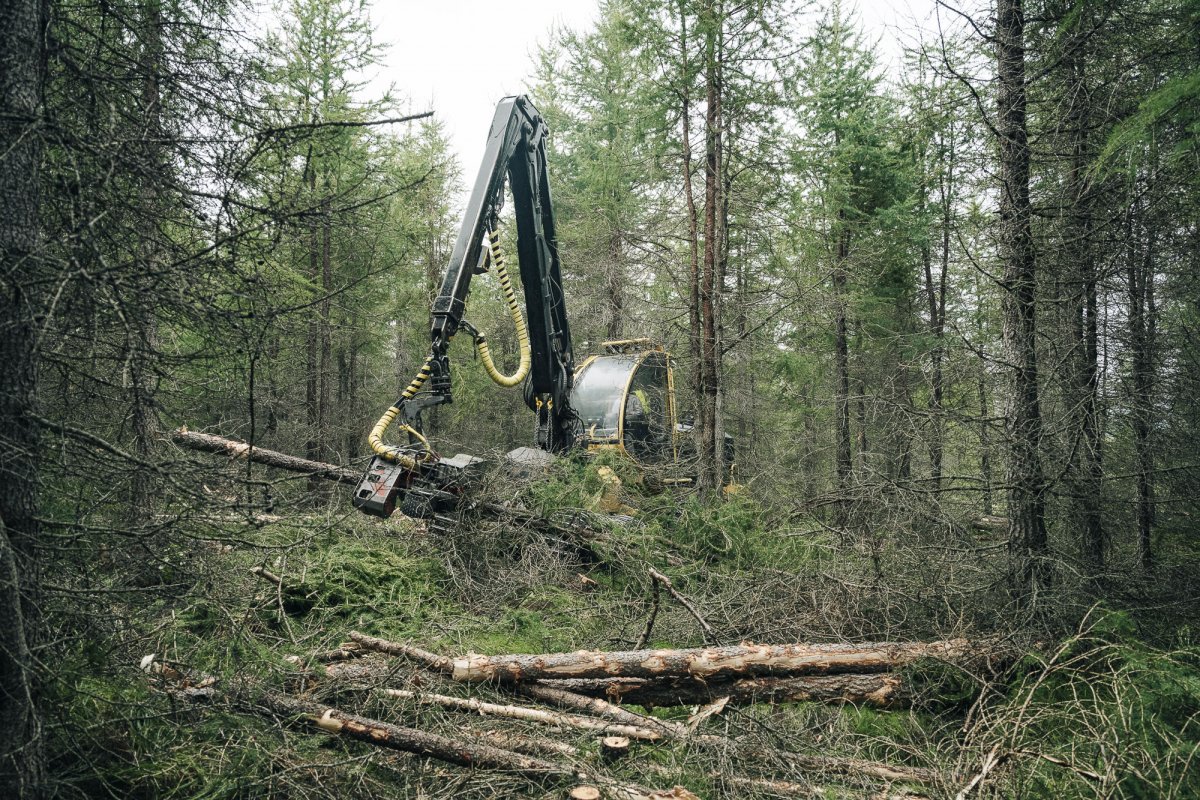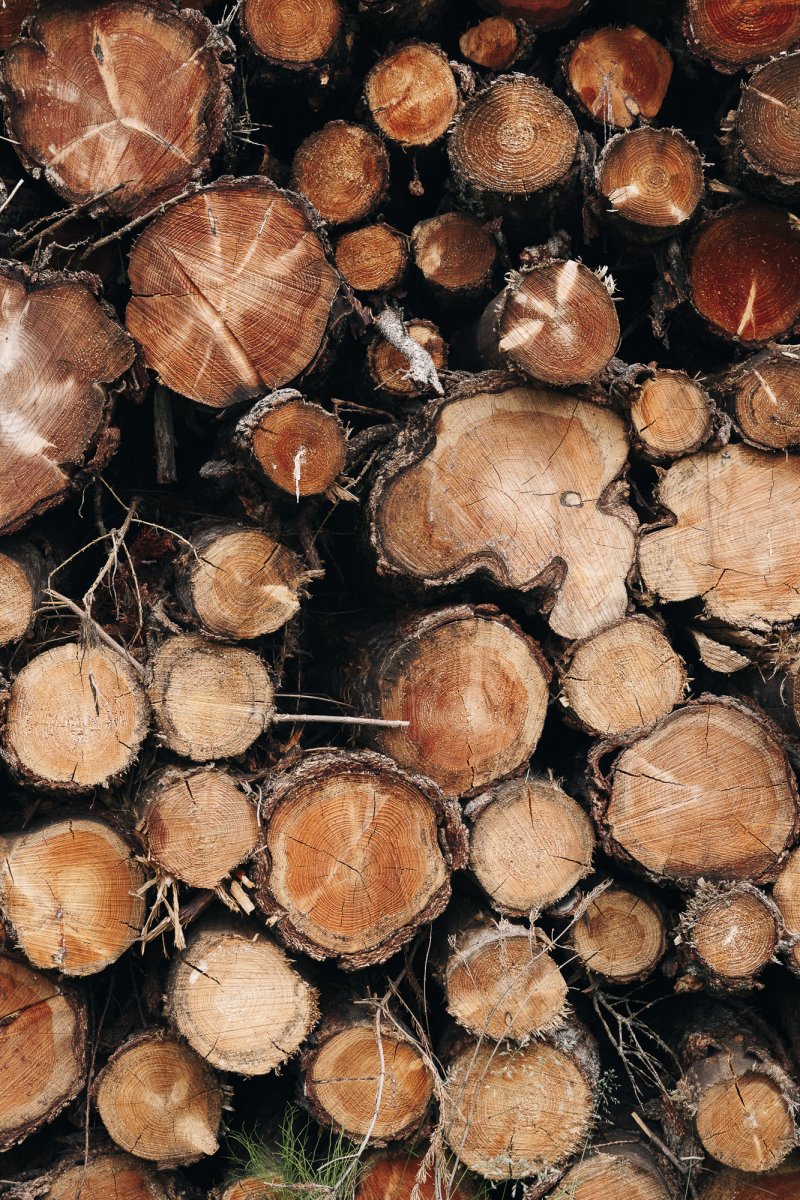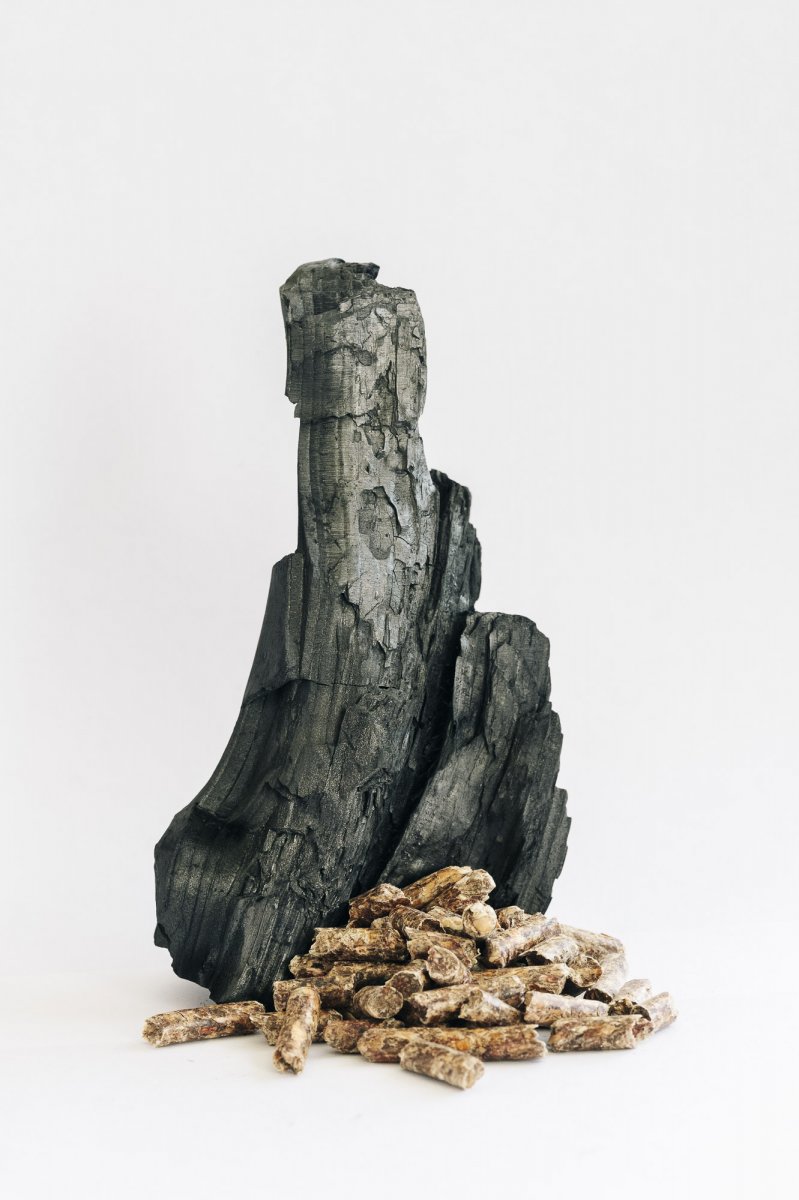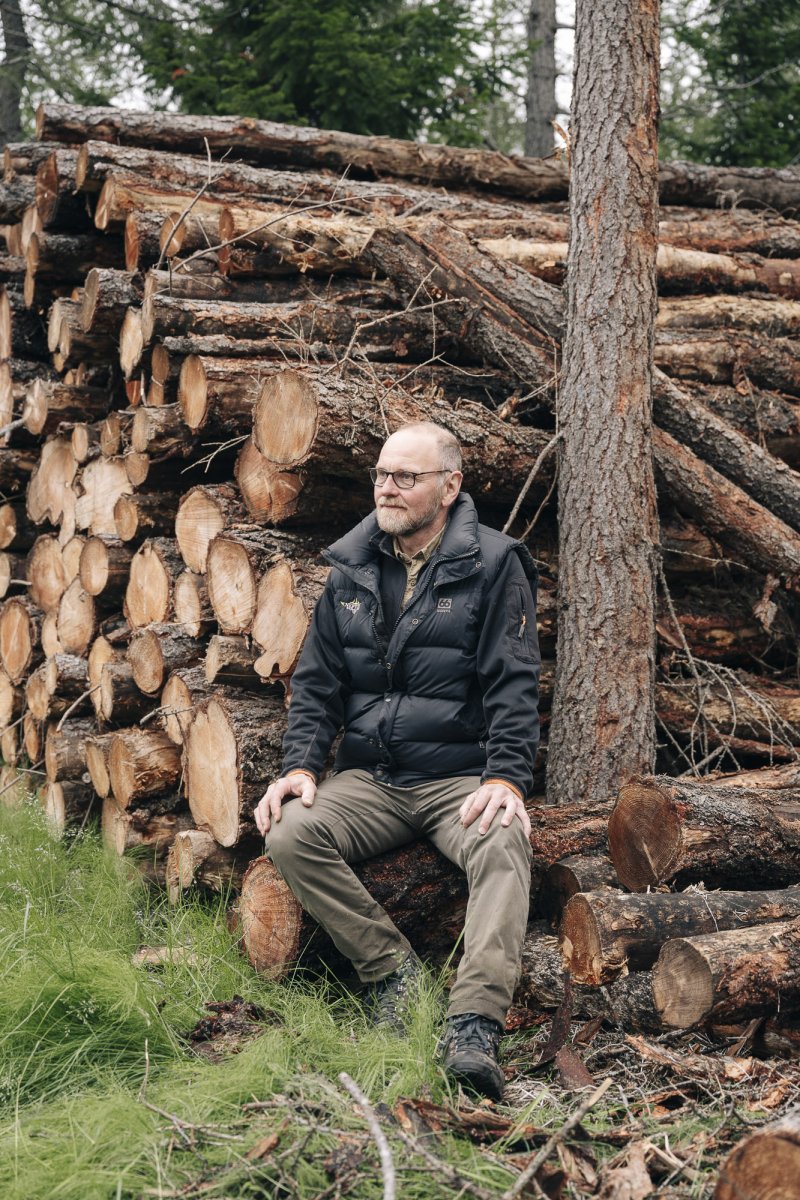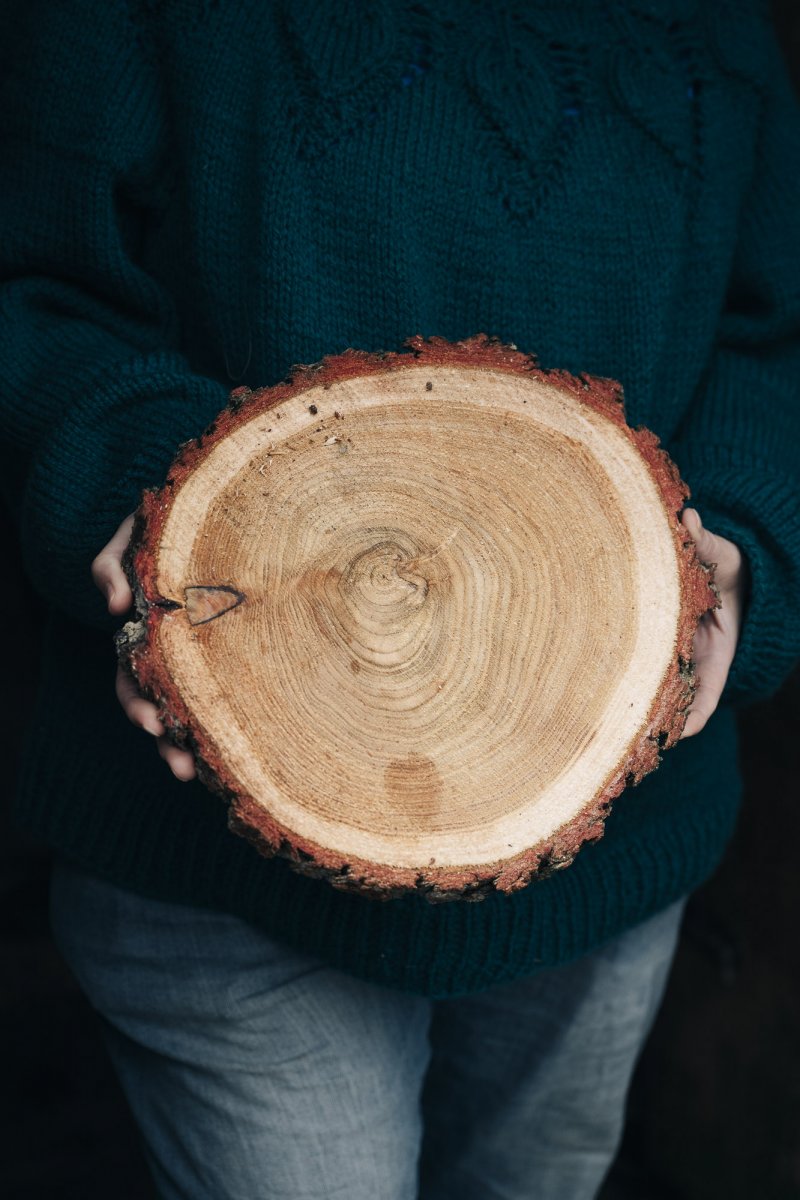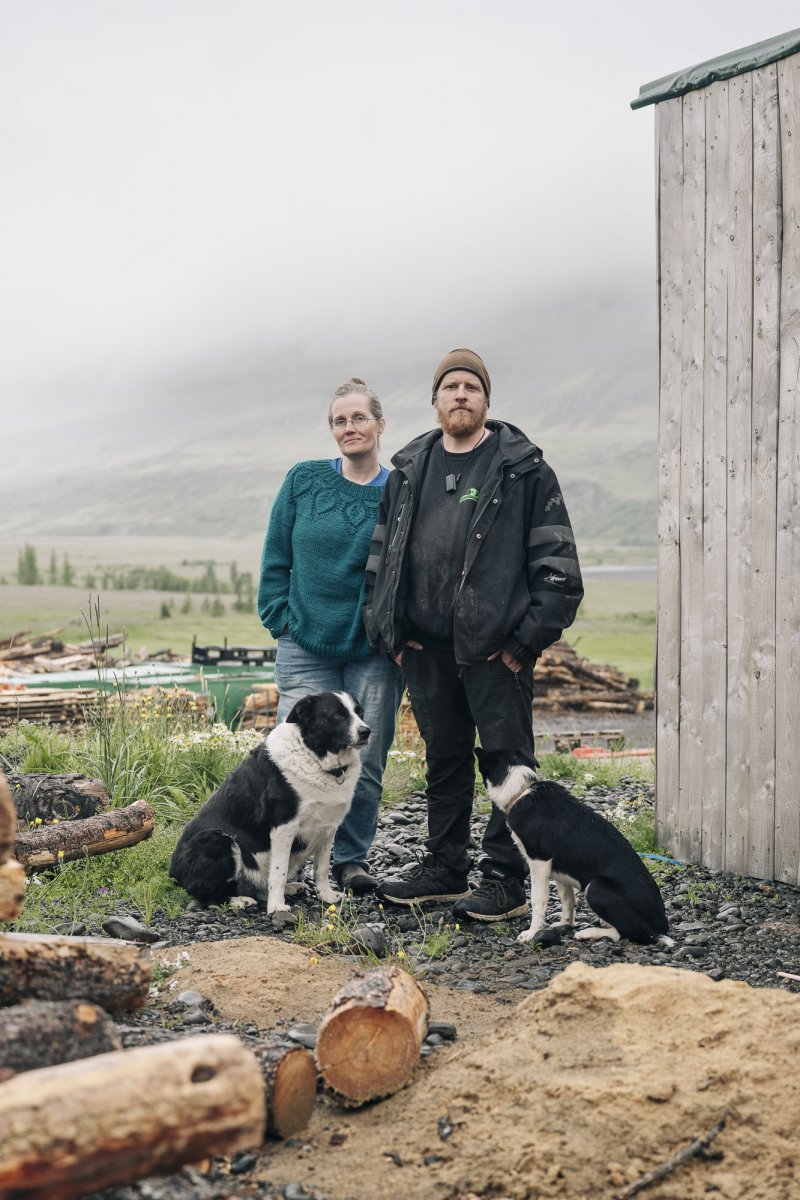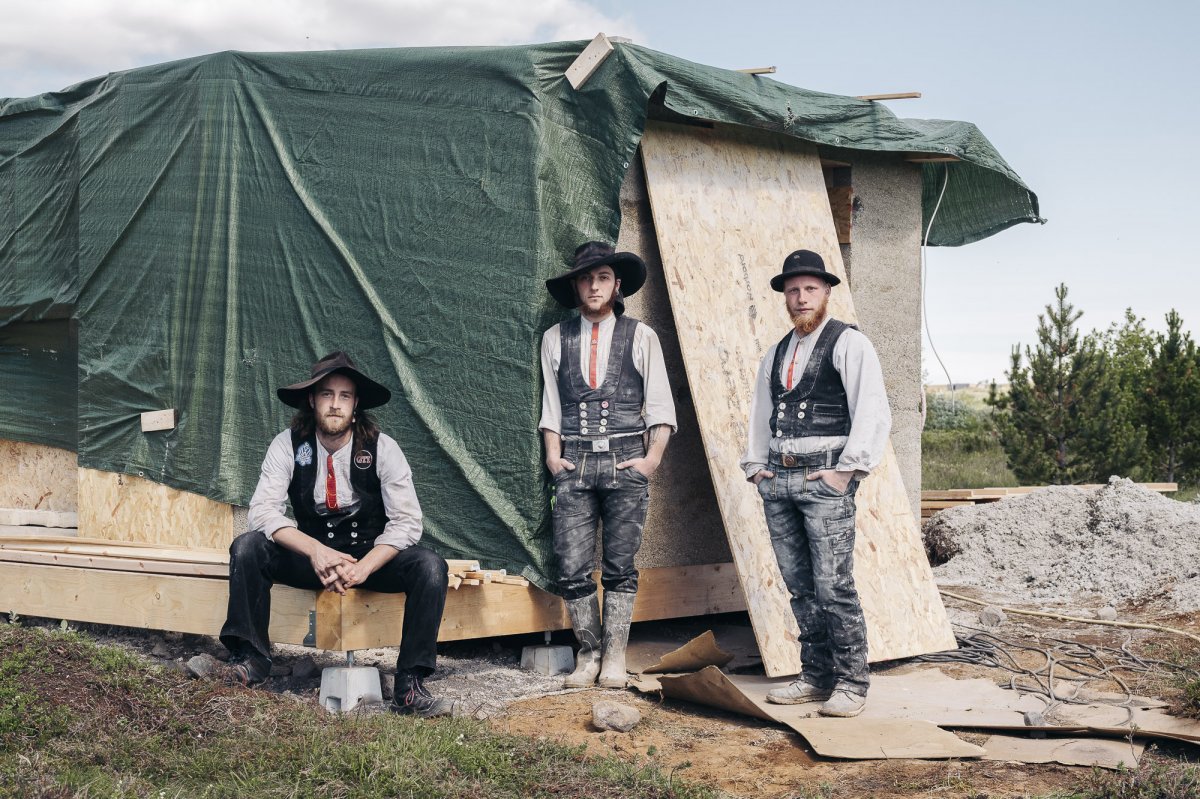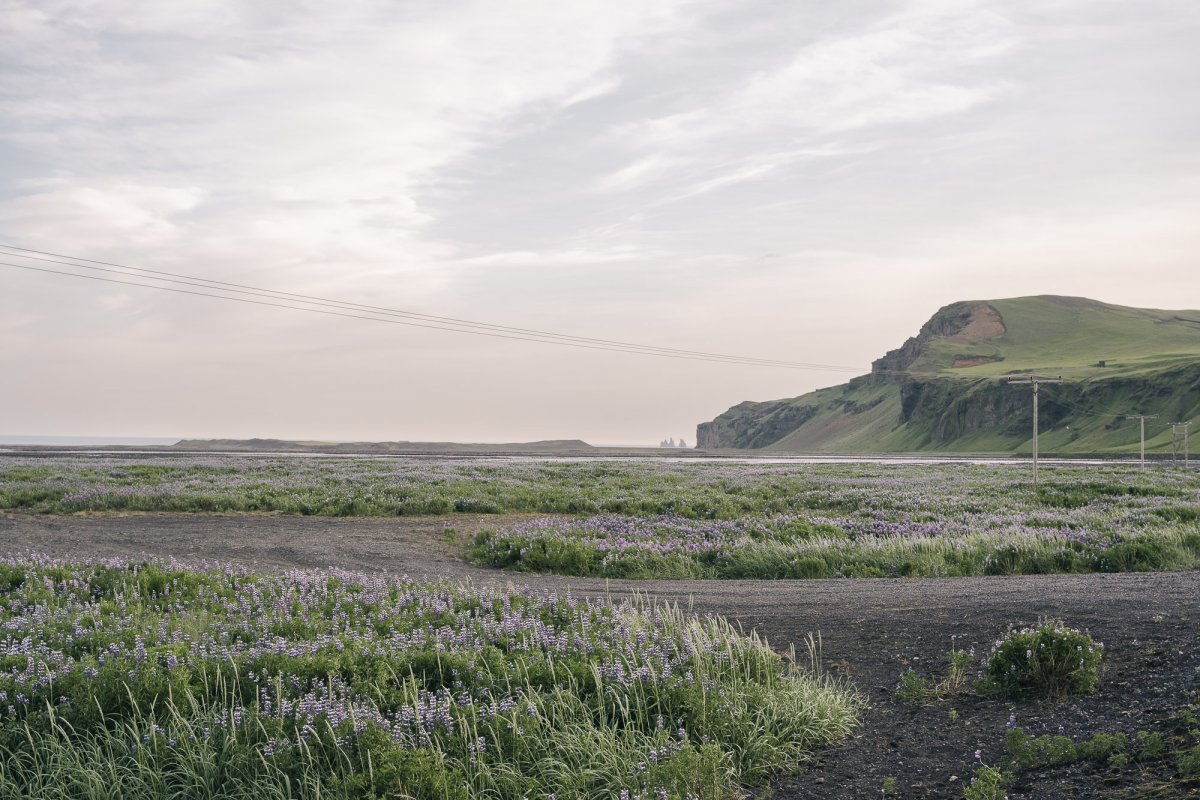Traveling to Iceland these days one will choose this destination not only for hot springs and waterfalls but also because of the harsh landscape. When the first settlers arrived in the 9th century the island looked different. Reports from that time suggest that the island was once covered in dense forests, from the coast to the mountains. As in most countries in Europe the forest was cut down when the population grew.
Today there are serious efforts to afforest the island. The Icelandic Forest Service is doing research on trees suitable for the changing climate and offers strategies and advice to local forest associations.
Luftblick auf den Hallormsstaður, einem der größten Waldgebiete Islands bei Egilsstaðir.
Þröstur Eysteinsson, Direktor der Isländischen Forstbehörde in einem Wald nahe seines Hauses bei Egilsstaðir. Der Wald besteht aus selbstgekreuzten und selbstgepflanzten Hrymur-Lärchen.
Junge Lärchen vor dem Auspflanzen.
Benjamín Örn Davíðsson auf einer seiner Aufforstungsflächen.
Gabriel Benjamínsson pflanzt auf dem Land seines Vaters Benjamín Örn Davíðsson.
Guðmundur Sigurðsson, Waldbauer, in seinem Wald.
Waldbauer Guðmundur Sigurðsson prüft das Wachstum einer Eberesche.
Gewächshaus der Isländischen Forstbehörde im Vaglaskógur. Hier werden Europäische und Sibirschen Lärchen gekreuzt (Larix sibirica x Larix decidua). Die Kreuzung, genannt " Hrymur", hat sich als äußerst gut geeignet für die klimatischen Verhältnisse in Island erwiesen. Zuerst gekreuzt wurde sie von Þröstur Eysteinsson.
Valgeir Davíðsson in einem Gewächshaus der Isländischen Forstbehörde. Hier werden Europäische und Sibirschen Lärchen gekreuzt (Larix sibirica x Larix decidua). Die Kreuzung, genannt " Hrymur", hat sich als äußerst gut geeignet für die klimatischen Verhältnisse in Island erwiesen. Zuerst gekreuzt wurde sie von Þröstur Eysteinsson.
Die Baumschule Sólskógar in Akureyri. Sie produziert jedes Jahr rund 4 Millionen Setzling von verschiedenen Baumarten, die im ganzen Land gepflanzt werden.
Saplings planted in Thingvellir, from left to right: Siberian larch (Larix sibirica), Lodgepole pine (Pinus contorta), downy birch (Betula pubescens), grey alder (Alnus incana), engelmann spruce (Picea engelmannii)
Concept Store von Fischersund in Reykjavik. Das Unternehmen produziert ausgewählte Parfums, Duftkerzen und Räucherstäbchen. Unter anderem werden hier die Öle von Hraundís Guðmundsdóttir verarbeitet. Gründer und Inhaber des Unternehmens ist der Musiker Jón Þór „Jónsi“ Birgisson von Sigur Rós und seine Familie.
Hraundís Guðmundsdóttir in ihrer Brennerei. Sie sammelt in den Wäldern Islands Pflanzen und gewinnt daraus ätherische Öle. Dabei arbeitet sie vor allem mit lokalen Waldbauern zusammen.
Concept Store von Fischersund in Reykjavik. Das Unternehmen produziert ausgewählte Parfums, Duftkerzen und Räucherstäbchen. Unter anderem werden hier die Öle von Hraundís Guðmundsdóttir verarbeitet. Gründer und Inhaber des Unternehmens ist der Musiker Jón Þór „Jónsi“ Birgisson von Sigur Rós und seine Familie.
Das Thermalbad Forest Lagoon in Akureyri. Das Bad ist umgeben von Bäumen und legt auch in seiner Ausstattung sehr viel Wert auf die Verwendung von Holz.
Blick in die hufeisenförmige Schlucht Ásbyrgi im Norden Islands. Im Jahr 1928 kaufte die isländische Forstorganisation Ásbyrgi und begann mit der Aufforstung im Inneren der Schlucht. Heute befindet sich heir ein Mischwäldchen (v. a. Birken, Weiden, Ebereschen und Fichten).
Luftblick auf den Hallormsstaður, einem der größten Waldgebiete Islands bei Egilsstaðir.
Ein Harvester eines lettischen Unternehmers in einem Waldstück bei Egilsstaðir.
Geerntetes Holz in einem Waldstück bei Egilsstaðir.
Holzkohle und Pellets von Tandrabretti.
Mangús Þorsteinsson von der Firma Tandrabretti in einem Waldstück bei Egilsstaðir.
Kristín Gunnarsdóttir mit einer Baumscheibe die ein sprunghaftes Wachstum des Baums nach dem Ausdünnen eines Waldes zeigt. Das Holz verliert durch unregelmäßiges Wachstum stark an Qualität.
Bjarki M Jónsson mit Frau Kristín Gunnarsdóttir, Eigentümer des Sägewerks Skógarafurðir bei Egilsstaðir.
Bastian Maiwald, 24 (links), Georg Stolberg, 23 (rechts) und Elias Widmann, 23 (Mitte) auf der Baustelle eines Tiyn House aus isländischem Holz in Grimsnes. Die drei Zimmerleute aus Deutschland sind auf Walz in Island.
Eine Fläche mit Alaska-Lupinen (Lupinus nootkatensis) auf einer Flutebene in Skaftárhreppur. Die Planze wird eingesetzt um den sandigen Boden zu befestigen und so Errosion und Sandstürme zu verhindern. Die Pflanze kommt ursprünglich aus Alaska und speichert Stickstoff im Boden. Ihr schnelles Wachstum und ihre Ausbreitung bereitet vielen Bauern allerdings Sorgen.


























